So let’s run through this checklist… I have here a historic shojo anime set in France, released to television in 1979 and features a main character who does a little gender bending. Gotta be Rose of Versailles? Oh good guess, but WRONG! Fooled you and honestly those clues would have fooled me as well as a short time ago until I discovered another series that is ‘similar’. Take what you will, but give it a shot as it is only 13 episodes (very short for a series in those days). May I present Isabelle of Paris.
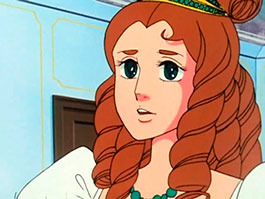 Call me ignorant, but I have never heard of the Romantic Masterpiece Theater. World Masterpiece Theater oh yes, I love those shows, but the previous moniker is our current interest and I don’t have much to say on it except I can guess (and I mean guess!) that Isabelle of Paris was labeled in this category as this was one of four shows released by a studio not usually seen on our radars, DAX International in 1979/80. These four shows could have been the Romantic Masterpiece Theater? By the way I want to thank Helen McCarthy’s research as this is what helped me come to this conclusion. Now this means I need to check out the other three shows: Julie the Wild Rose, Golden-Haired Jeannie and Wandering Girl Nell. … What I do know is that we get a pre-intro to Isabelle for Romantic Masterpiece Theater which features cats… I love cats and it’s a short, simple and a cute sequence, but anyway… on with the show!
Call me ignorant, but I have never heard of the Romantic Masterpiece Theater. World Masterpiece Theater oh yes, I love those shows, but the previous moniker is our current interest and I don’t have much to say on it except I can guess (and I mean guess!) that Isabelle of Paris was labeled in this category as this was one of four shows released by a studio not usually seen on our radars, DAX International in 1979/80. These four shows could have been the Romantic Masterpiece Theater? By the way I want to thank Helen McCarthy’s research as this is what helped me come to this conclusion. Now this means I need to check out the other three shows: Julie the Wild Rose, Golden-Haired Jeannie and Wandering Girl Nell. … What I do know is that we get a pre-intro to Isabelle for Romantic Masterpiece Theater which features cats… I love cats and it’s a short, simple and a cute sequence, but anyway… on with the show!
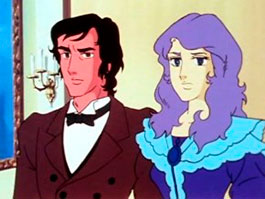 Isabelle of Paris always begins with a few seconds of recap before the start of the official intro, but when that intro comes, I am excited. It’s not the most technically advanced in terms of animation and it always outlines the main cast, which by the end of episode one you should have a good handle on. My joy is that it features the music of Frédéric Chopin (the real Piano Man). Fantaisie-Impromptu in C♯ minor to be exact, a very bold choice, but somewhat fitting as well. Chopin’s work is often heard throughout the series including one of my personal favorites, Nocturne in B flat minor, Op. 9 No. 1.
Isabelle of Paris always begins with a few seconds of recap before the start of the official intro, but when that intro comes, I am excited. It’s not the most technically advanced in terms of animation and it always outlines the main cast, which by the end of episode one you should have a good handle on. My joy is that it features the music of Frédéric Chopin (the real Piano Man). Fantaisie-Impromptu in C♯ minor to be exact, a very bold choice, but somewhat fitting as well. Chopin’s work is often heard throughout the series including one of my personal favorites, Nocturne in B flat minor, Op. 9 No. 1.
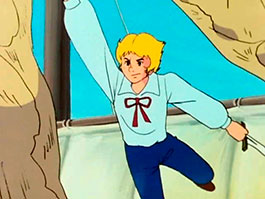 Set during the Franco-Prussian War of 1870–1871, during the reign of Napolean III, we find the backdrop to Isabelle of Paris. Isabelle is a carefree 15 year old noble French girl who gets caught up in the social-political climate of that era. France has been defeated and the Prussian Army has laid siege to Paris much to the delight of many crooked Parisian nobles and politicians. Being of the upperclass she witnesses first hand the toil this situation has put onto the Rostain family. Her brother is an officer in the army, her sister is in love with a commoner (the piano teacher!) who like many others aims to defend Paris as the army and government cannot and her parents are set on upholding tradition of the family name and prestige.
Set during the Franco-Prussian War of 1870–1871, during the reign of Napolean III, we find the backdrop to Isabelle of Paris. Isabelle is a carefree 15 year old noble French girl who gets caught up in the social-political climate of that era. France has been defeated and the Prussian Army has laid siege to Paris much to the delight of many crooked Parisian nobles and politicians. Being of the upperclass she witnesses first hand the toil this situation has put onto the Rostain family. Her brother is an officer in the army, her sister is in love with a commoner (the piano teacher!) who like many others aims to defend Paris as the army and government cannot and her parents are set on upholding tradition of the family name and prestige.
Isabelle herself must flee to safety in Versailles once the Prussians near Paris and is constantly accompanied by Jean, and old friend who happens to have the biggest crush on Isabelle. Gender bending plays a minor role by the second half of this short series. Not so much a struggle for identity, but the need to reverse one’s role to escape Versailles and perform acts of espionage. Isabelle has been tasked to get to London, England to recruit help to save Paris from the invading Prussian army. Isabelle proclaims, “If only I were a boy?” She begins to cut her flowing locks of hair and a rushes to a change of clothes thus adopting a new role, a disguise to get past anyone who might be looking for our lady. Different from The Rose of Versailles in the fact that Oscar was bred to be a son, an heir, to her father, Isabelle does not have an issue of struggling with her internal sense of self. This is only a matter of procedure to get the job done so to speak. And the shorter hairstyle, it looks really sharp!
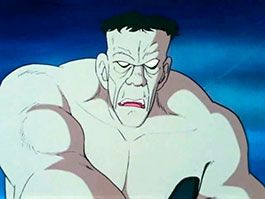 Though a short series for the time (40–50 episodes was the norm), Isabelle of Paris told an effective story which when you look at it from a glance is really a reflection on the evolution of the Rostain family from privileged nobility to defenders of the common man. Isabelle of Paris portrays a solid, dramatic and adventurous tale full of strength that also occasionally threw in a monkey wrench that made me go, “What, the…?”… like being chased by a guy who looks like Frankenstein and the main ‘evil’ politician having green skin, lol. Yet the conclusion was a definite surprise as I was not expecting such a tragic downfall… prepare a few tissues. This was a happy find as of recent and is without question a welcome break from much more drawn out series which sometimes can be a haul getting through. May I add yet another fun shojo series to my collection. YES!!!
Though a short series for the time (40–50 episodes was the norm), Isabelle of Paris told an effective story which when you look at it from a glance is really a reflection on the evolution of the Rostain family from privileged nobility to defenders of the common man. Isabelle of Paris portrays a solid, dramatic and adventurous tale full of strength that also occasionally threw in a monkey wrench that made me go, “What, the…?”… like being chased by a guy who looks like Frankenstein and the main ‘evil’ politician having green skin, lol. Yet the conclusion was a definite surprise as I was not expecting such a tragic downfall… prepare a few tissues. This was a happy find as of recent and is without question a welcome break from much more drawn out series which sometimes can be a haul getting through. May I add yet another fun shojo series to my collection. YES!!!

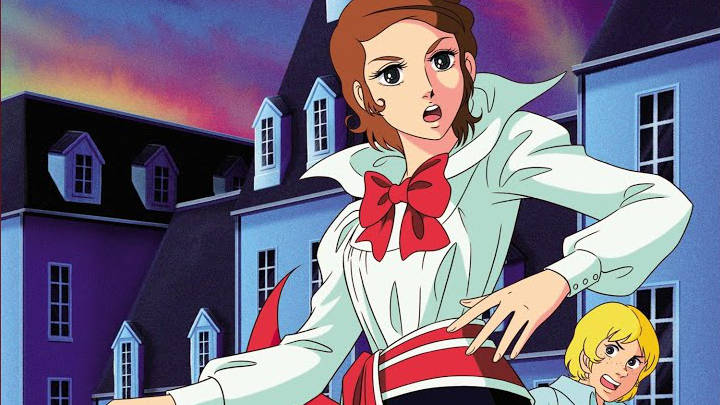
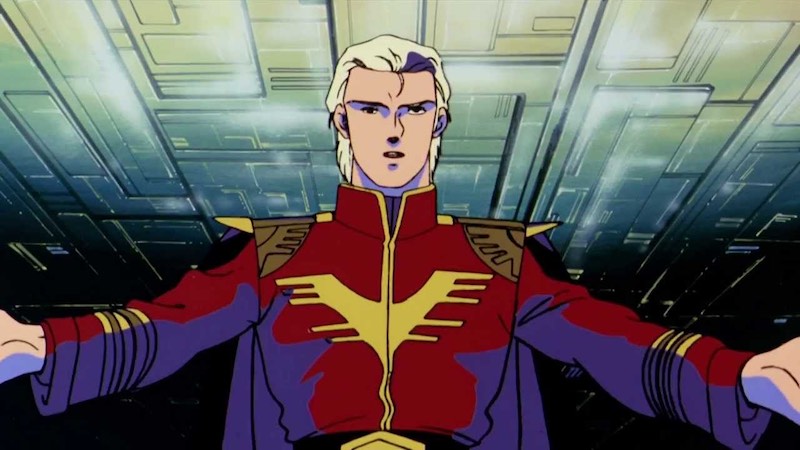
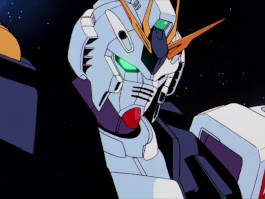
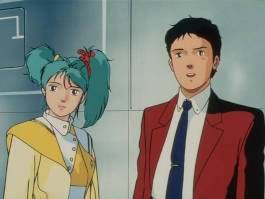 Returning to a heavier political drama more in line with Zeta Gundam, compared to the more spastic Gundam ZZ, Char’s Counterattack was a breathe of relief. The return of Bright Noa and family and even Cameron Bloom were also welcome, but I missed not seeing Sayla Mass again. The sibling reunion sadly never happened (Sayla is Char’s sister in case you did not know). New faces like a teenage Hathaway Noa and the spoiled brat Quess Paraya had their place in the plot as well, but did Quess have to be so annoying… uber bitchy is more fitting. And finally Amuro Ray, piloting a new Gundam mech known as the Nu Gundam, how fitting. Even the spirit of Lalah Sune returns for this last time to bask in the sun between the rivalry of her two suitors. Ironically grown men should talk out the problems and find a peaceful solution, but the feud between Amuro and Char is beyond any form of negotiation.
Returning to a heavier political drama more in line with Zeta Gundam, compared to the more spastic Gundam ZZ, Char’s Counterattack was a breathe of relief. The return of Bright Noa and family and even Cameron Bloom were also welcome, but I missed not seeing Sayla Mass again. The sibling reunion sadly never happened (Sayla is Char’s sister in case you did not know). New faces like a teenage Hathaway Noa and the spoiled brat Quess Paraya had their place in the plot as well, but did Quess have to be so annoying… uber bitchy is more fitting. And finally Amuro Ray, piloting a new Gundam mech known as the Nu Gundam, how fitting. Even the spirit of Lalah Sune returns for this last time to bask in the sun between the rivalry of her two suitors. Ironically grown men should talk out the problems and find a peaceful solution, but the feud between Amuro and Char is beyond any form of negotiation.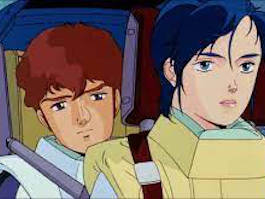 Char’s Counterattack is a great film in terms of the Gundam collective, gorgeous in presentation, yet for me something about it seems a little off. I am sure director Yoshiyuki Tomino was tired of coming up with more stories to satisfy Bandai and Sunrise and wished he could just end Gundam so he could move onto other pastures. And yet even after this ‘final’ film, Gundam still just keeps on going and going and going and… yeah you get that picture. For 1988, Char’s Counterattack was the final line drawn in the sand for the epic rivalry between Char and Amuro. With all the other elements either good, or disappointing depending on one’s opinion of this movie, Char’s Counterattack made a huge statement. This is an epic film, a true successor to Zeta Gundam, if only this was Gundam ZZ instead. My biggest gripe is that Char’s Counterattack was a one-off film and not a longer developed series. It took me several watchings to appreciate this film because it lays out so much so fast that one viewing can’t take in the scope of the drama.
Char’s Counterattack is a great film in terms of the Gundam collective, gorgeous in presentation, yet for me something about it seems a little off. I am sure director Yoshiyuki Tomino was tired of coming up with more stories to satisfy Bandai and Sunrise and wished he could just end Gundam so he could move onto other pastures. And yet even after this ‘final’ film, Gundam still just keeps on going and going and going and… yeah you get that picture. For 1988, Char’s Counterattack was the final line drawn in the sand for the epic rivalry between Char and Amuro. With all the other elements either good, or disappointing depending on one’s opinion of this movie, Char’s Counterattack made a huge statement. This is an epic film, a true successor to Zeta Gundam, if only this was Gundam ZZ instead. My biggest gripe is that Char’s Counterattack was a one-off film and not a longer developed series. It took me several watchings to appreciate this film because it lays out so much so fast that one viewing can’t take in the scope of the drama. If one who has lived life on the highest level we often think of that as great success. But much like the legend of Icarus, one can fly so high only to be burned and end up falling to their death. Char’s ambitions became corrupted in Char’s Counterattack, absolute power corrupts absolutely. What happened to you my old friend? Why the anger? Why did you realize your humanity when it was too late? Amuro you were so righteous, a moral knight who gave his life for humanity, did you also have to sacrifice yourself you altruistic soul? Tomino fell back to an old trait in order to end this feud, “Kill ‘em all!”. The only question remains, can these two men so intertwined in combat with each other ever find peace now that they are not tied to this physical realm anymore?
If one who has lived life on the highest level we often think of that as great success. But much like the legend of Icarus, one can fly so high only to be burned and end up falling to their death. Char’s ambitions became corrupted in Char’s Counterattack, absolute power corrupts absolutely. What happened to you my old friend? Why the anger? Why did you realize your humanity when it was too late? Amuro you were so righteous, a moral knight who gave his life for humanity, did you also have to sacrifice yourself you altruistic soul? Tomino fell back to an old trait in order to end this feud, “Kill ‘em all!”. The only question remains, can these two men so intertwined in combat with each other ever find peace now that they are not tied to this physical realm anymore?
 World War II is winding down as we find a small Japanese unit near the Burmese border. The year is 1945 and to keep their morale high these soldiers often break into song. A young soldier by the name of Mizushima taught his comrades to sing and his musical skills would accompany them with a Burmese harp. It is this fraternal bond that holds the group together and it would be together that the news would arrive that the war these men had been fighting in for some time was now over. Captured and brought to a P.O.W. camp, they would wait until news from Japan would signal their return home. In the mean time Mizushima was asked to volunteer to join a group to alert another Japanese unit about the fact that the war was over. He would take this assignment, but in the process would not return, bringing sadness to his friends.
World War II is winding down as we find a small Japanese unit near the Burmese border. The year is 1945 and to keep their morale high these soldiers often break into song. A young soldier by the name of Mizushima taught his comrades to sing and his musical skills would accompany them with a Burmese harp. It is this fraternal bond that holds the group together and it would be together that the news would arrive that the war these men had been fighting in for some time was now over. Captured and brought to a P.O.W. camp, they would wait until news from Japan would signal their return home. In the mean time Mizushima was asked to volunteer to join a group to alert another Japanese unit about the fact that the war was over. He would take this assignment, but in the process would not return, bringing sadness to his friends.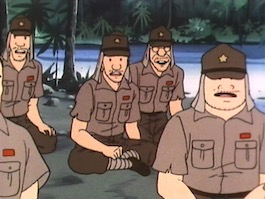 The possibility of Mizushima being alive never left the spirits of his fellow compatriots. It was in a split second moment, a chance encounter with a passing Buddhist monk (priest in my sub translation) that the reality of Mizushima had indeed survived, or did he? The monk looked very much like him, but how could that be… Mizushima was a Japanese soldier, not a Buddhist monk? Who was this monk and why was he so silent and cautious towards the company of Japanese soldiers? Such is the mystery of The Harp of Burma (The Burmese Harp), originally a book by Michio Takeyama, which unfolds the tale of Mizushima. We follow his coming into contact with a monk’s robe and his sworn vow and duty to pay homage and respect to all his dead compatriots left behind on foreign soil.
The possibility of Mizushima being alive never left the spirits of his fellow compatriots. It was in a split second moment, a chance encounter with a passing Buddhist monk (priest in my sub translation) that the reality of Mizushima had indeed survived, or did he? The monk looked very much like him, but how could that be… Mizushima was a Japanese soldier, not a Buddhist monk? Who was this monk and why was he so silent and cautious towards the company of Japanese soldiers? Such is the mystery of The Harp of Burma (The Burmese Harp), originally a book by Michio Takeyama, which unfolds the tale of Mizushima. We follow his coming into contact with a monk’s robe and his sworn vow and duty to pay homage and respect to all his dead compatriots left behind on foreign soil. Animated Classics of Japanese Literature contained an interesting mix of stories from a meta-series that appears to be very plain and mundane if judged by appearance alone. Several of the episodes I came to enjoy, but The Harp of Burma really stood out; it moved me like few anime before or since. This was one of the best stories I have ever seen about both sacrifice and compassion. War and other traumatic situations always leave a scar to those who experience the event first hand, but does it also change something inside of you? Does that experience make you more apt to show kindness and gratitude, or even change your life direction at the drop of a hat? Dry eyes were non existent for me each time I saw the two episode special, particularly at the ending. So often we ask what can I do to make my life better, but how often do we ask, what can I do to ease someone else’s suffering with no expectation of anything in return?
Animated Classics of Japanese Literature contained an interesting mix of stories from a meta-series that appears to be very plain and mundane if judged by appearance alone. Several of the episodes I came to enjoy, but The Harp of Burma really stood out; it moved me like few anime before or since. This was one of the best stories I have ever seen about both sacrifice and compassion. War and other traumatic situations always leave a scar to those who experience the event first hand, but does it also change something inside of you? Does that experience make you more apt to show kindness and gratitude, or even change your life direction at the drop of a hat? Dry eyes were non existent for me each time I saw the two episode special, particularly at the ending. So often we ask what can I do to make my life better, but how often do we ask, what can I do to ease someone else’s suffering with no expectation of anything in return?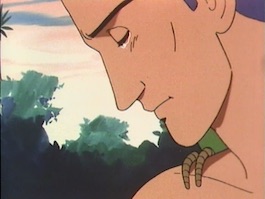 Well known in Japan, The Harp of Burma (The Burmese Harp) also exists as two live action film adaptations, both directed by Kon Ichikawa. His original version in 1956 is considered a classic and after watching the trailer I have strong interest to track down and watch this version. It reminds me of Ingmar Bergman’s work from that era. It’s black and white, portrays serious character analysis and feels like a film made by crafted hands (no computers!): all yummy in my book. This can act as a great substitute if you can’t find the anime and of course there is always the original novel. It Is not very often I find anime like The Harp of Burma and it may not be too everyone’s liking, but in terms of expressing the human experience of transformation of the soul, The Harp of Burma is one of my all time favorites. Period!
Well known in Japan, The Harp of Burma (The Burmese Harp) also exists as two live action film adaptations, both directed by Kon Ichikawa. His original version in 1956 is considered a classic and after watching the trailer I have strong interest to track down and watch this version. It reminds me of Ingmar Bergman’s work from that era. It’s black and white, portrays serious character analysis and feels like a film made by crafted hands (no computers!): all yummy in my book. This can act as a great substitute if you can’t find the anime and of course there is always the original novel. It Is not very often I find anime like The Harp of Burma and it may not be too everyone’s liking, but in terms of expressing the human experience of transformation of the soul, The Harp of Burma is one of my all time favorites. Period!
You must be logged in to post a comment.